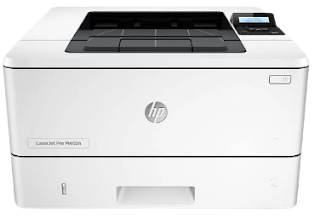How to setup HP LaserJet printer models
Introduction
If your HP LaserJet printer setup has been sitting idle for a while, it's time to get it back into action. In this guide, we'll walk you through the steps of installing the software that came with your printer and connecting it to Wi-Fi so that you can print again in no time!
Step 1 - Turn on the printer.
To turn on your printer, follow these steps:
Plug in the power cord and wait for it to boot up. This may take a few minutes, but don't worry if you don't hear any noises—you can check that the power cord is connected properly by looking at where it's plugged into your wall outlet or computer.
Test out any installed software before proceeding with step 3 (which will install new drivers).
Step 2 - Open the front cover.
The first step to installing the printer is to open the front cover. This can be done by lifting up on the lid, which is located at the top of your printer. Look for a small port on your HP LaserJet 5500 series model that's labeled an be done by lifting up on the lid, which is located at the top of your printer. Look for a small port on your HP LaserJet 5500 series model that's labeled "USB.". Plug in your USB cable and then connect it to a computer or other device using an available USB port.
Step 3 - Plug a USB cable into the printer and USB port.
The next step is to plug one end of your USB cable into the printer and then connect it to your computer with another extension cord or adapter. You may want to use an extension cable if you have more than one device that needs access from your printer (for example, if you have a wireless keyboard and mouse). If this is the case, make sure that both ends of each extension cable are plugged into both devices before connecting them together.
Step 4 - Install the software that came with your printer.
The software that came with your printer should have a lot of information about how to use it and what it can do. If you need to find out more about the HP LaserJet Pro P1102dn, for example, search for "HP LaserJet Pro P1102dn" on Google or Bing.
You may also be able to install the program manually by following the instructions on the CD or DVD that came with your printer if you don't have access to another computer with an internet connection.
Step 5 - Connect to WiFi.
If you are connecting to an existing network, follow the instructions on the screen.
If you are setting up a new network, follow these instructions:
Go to "Settings" and then select "Connect to Wi-Fi" from the list of options under "Network Settings."
Select your Wi-Fi network from this list (the password will vary depending on what type of router or modem you have).
Enter in your username and password for that particular network if prompted by your device (you may need them from someone else who can help with this step).
Verify that everything seems correct before proceeding further into the setup process by clicking Next at any point during this step when asked about connection details; otherwise, return here later!
Step 6 - Set up a new wireless network if necessary.
If you are setting up a new wireless network, follow the instructions in the printer manual.
If you are connecting to an existing network and do not have access to the network settings on the printer, make sure that you know the password for this particular device.
You can also use public Wi-Fi networks (e.g., at coffee shops), but it's always best to check whether they are secure or not before using them as part of your business operations.
With these simple steps you can get your HP LaserJet printing again within minutes
With these simple steps, you can get your HP LaserJet printer printing again within minutes.
Turn off the printer, unplug it from the power source, and remove any residual toner from the drum or fuser unit.
Open the front cover of your printer, then remove any remaining toner from inside it by either shaking it vigorously or using a vacuum cleaner with an attachment designed for removing small amounts of dust from around electrical components such as fans and motors within printers.
Make sure that all cables have been removed from their ports on both sides of your device before continuing with this process because they may interfere with proper operation during installation procedures outlined below later on down here inside this article now actually written word-for-word underlined twice so let's just move right along together alright?

Comments
Post a Comment